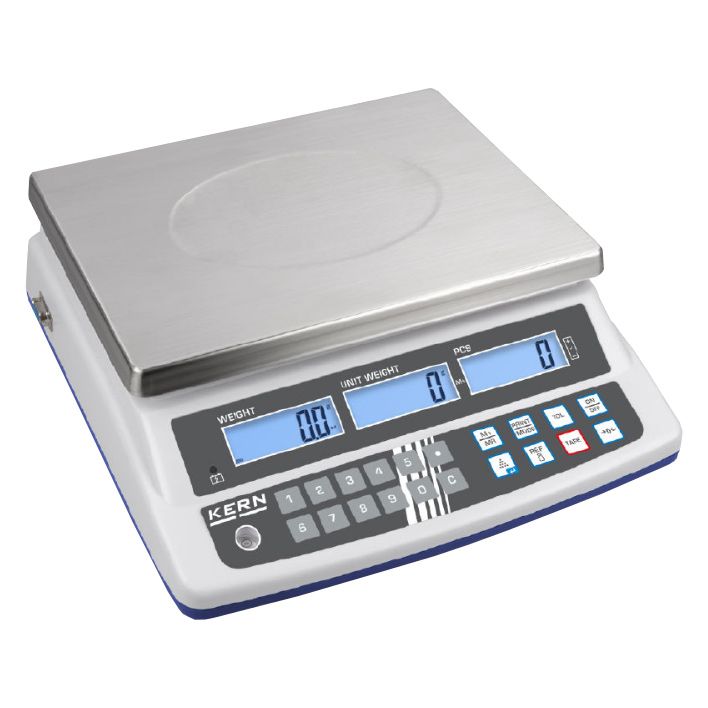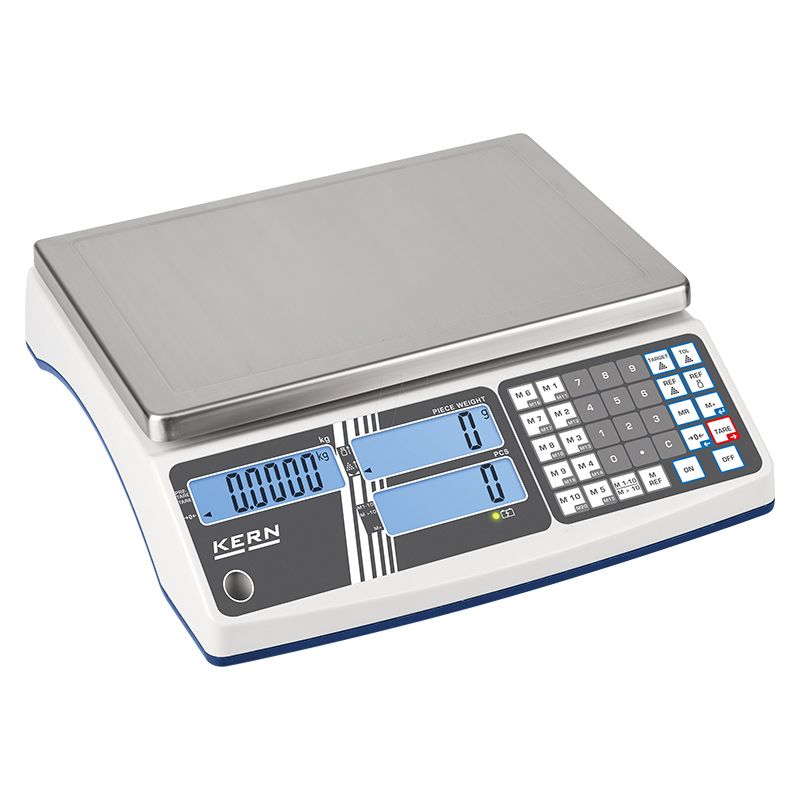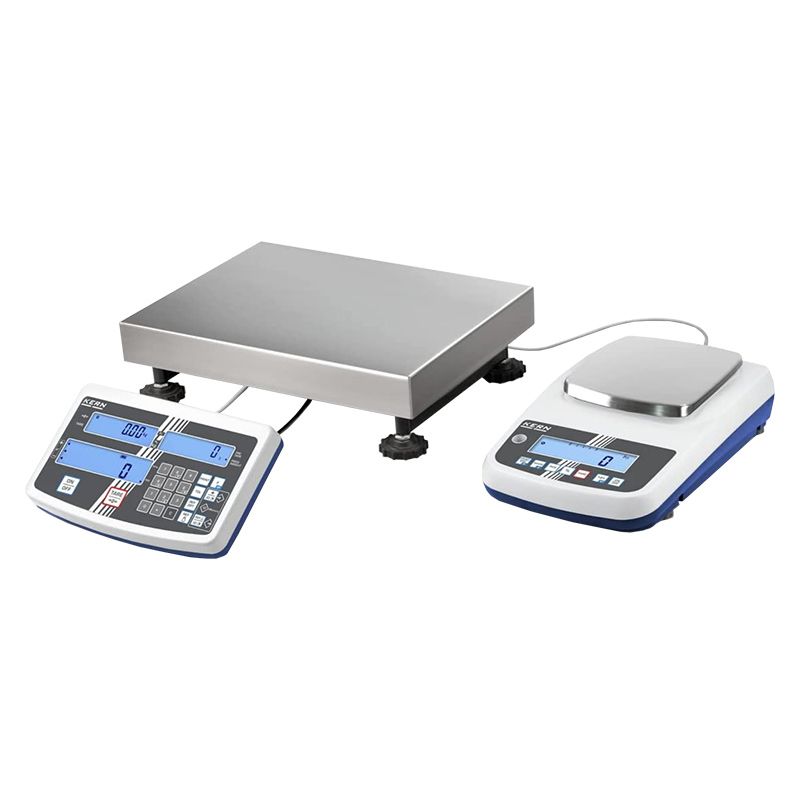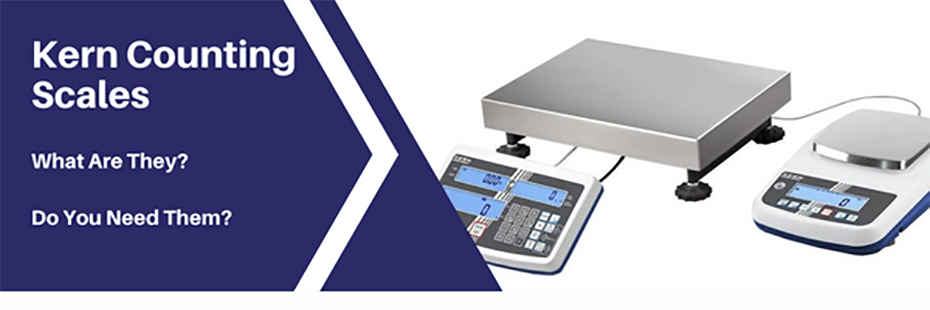
To meet the diverse weighing requirements of their customers, Kern has released three new ranges of counting balances: the CIB Counting Balance, CCA Counting System, and CPE Counting Balance; but what are counting scales and do you need them?[1]
Quick Links
- What Are Counting Scales?
- How Do Counting Scales Work?
- Why Are Counting Scales Useful?
- Who Uses Counting Scales?
- Which Features Do Kern’s Counting Scales Include?
- Do You Need Kern Counting Scales?
- Further Information
What Are Counting Scales?
Ideal for use in quality control centres, warehouses, and factories, counting scales are weighing balances with the added capability of counting the number of objects placed on the plate. They can provide the total weight, piece part weight, and total count readings.
As such, counting scales are perfect for check-weighing applications which involve checking the weight of accumulated objects of identical weight against a pre-determined limit. For example, if the pre-programmed limit is 100g and all the items weigh 25g, then the counting scale will alert you when 4 objects are on the plate as the set value will have been reached. This improves the accuracy of counting procedures and reduces the manual input required.
How Do Counting Scales Work?
Like all scales, counting balances measure the total weight of the items placed on the weighing plate. However, they can also be used to determine the average piece weight and total count.
To determine the count, they divide the total weight by the average weight of the sample piece (this can be manually input or set by weighing one of the sample pieces) to provide the number of items on the balance. You must ensure that all the items you place on the scale are of the same weight or the equation will not work and the result will be inaccurate.
Why Are Counting Scales Useful?
Put simply, counting scales are useful because they save you time and money. In addition to determining the number of pieces in a lot, these balances can be used to count large amounts of the same material and assemble multiple lots with a specific number of items quickly, simply, and precisely. Therefore, counting scales are often relied upon in quality assurance departments, warehouses, printers, manufacturers, supply companies, and retail stores.
Who Uses Counting Scales?
Many industries turn to counting scales to improve efficiency and accuracy; below is an overview of how these balances are utilised in some sectors.
Textiles

Textile manufacturers use counting scales to optimise efficiency by:
- Counting raw materials
- Monitoring manufacturing processes
- Weighing bundles of finished products
Agriculture

As counting balances will alert you when a predefined limit is reached, staff do not have to worry about weighing/counting items. For this reason, they are used within the agricultural sector to increase packaging productivity.
Food & Beverages

It is vital within the food and beverage industry to deliver consistency. Counting scales help to maintain proper portion control and improve the efficiency and precision of packaging operations.
Supply Companies

Counting scales provide a solution to numerous applications within supply companies:
- Taking inventory: for example, plumbing supply companies may use counting balances to determine how many copper fittings they have left
- Manufacturing and packing: counting scales may be used to check that lots include the correct number of pieces before they are dispatched
Warehousing
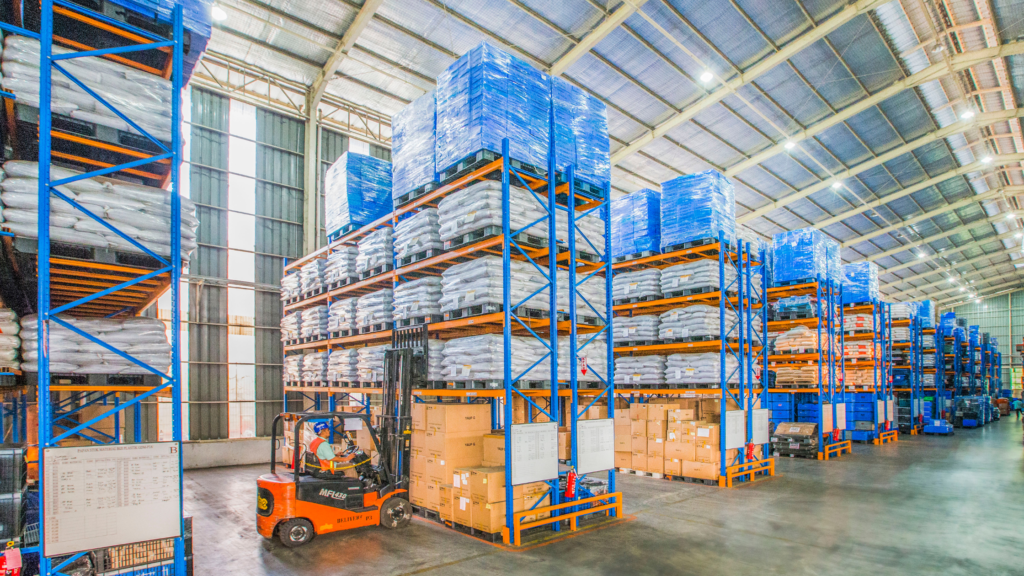
Counting balances are used within retail warehouses to check the number of pieces in a lot before approving it for dispatch.
Retail

Shops, restaurants, and entertainment/leisure centres use counting scales to save time totalling tills and/or counting coins/tokens.
Pharmaceutical

Medicine recipes must be followed exactly to ensure the potency of the drug and the safety of the patient. Counting scales are used to assemble recipe ingredients exactly.
Mining

Counting balances are used within the mining industry to:
- Ensure weights are within legal limits for incoming and outgoing materials
- Manage payloads
Which Features Do Kern’s Counting Scales Include?
Kern’s new ranges of counting balances have been designed to serve a variety of operators: from those who want a simple counting scale like the CPE Counting Balance; to users requiring a robust scale with a large memory such as the CIB Counting Balance; to professionals that need a high-resolution balance capable of counting the smallest parts in the largest quantities, for example, Kern’s CCA Counting System.
The table below offers a comparison of Kern’s new CPE, CIB, and CCA Counting Scales and highlights the features of each model.
| Kern CPE Counting Balance | Kern CIB Counting Balance | Kern CCA Counting System | |
| Counting Resolution | 60 000 points | 30 000 points | 300 000 000 points |
| Three Displays |
✔ Weight ✔ Reference Weight ✔ Total pieces |
✔ Weight ✔ Reference Weight ✔ Total pieces |
✔ Weight ✔ Reference Weight ✔ Total pieces |
| Rechargeable Battery | ✔ | ✔ | ✖ |
| Compact | ✔ | ✔ | ✖ |
| Check-weighing | ✔ | ✔ | ✔ |
| Totalising | ✔ | ✔ | ✔ |
| Counting Mode | ✔ | ✔ | ✔ |
| Weighting Mode | ✔ | ✔ | ✔ |
| Percentage Determination | ✖ | ✖ | ✔ |
| Recipe Function | ✖ | ✖ | ✔ |
| Selectable Weighing Units | ✖ | ✖ | ✔ |
| Numerical Keypad | ✖ | ✔ | ✔ |
| Internal Memory | ✖ | ✔ | ✔ |
| PRE-TARE Function | ✔ | ✔ | ✔ |
| Protective Cover | ✖ | ✔ | ✔ |
| Draft Shield | ✖ | ✖ | ✔ |
| RS-232 Data Interface | ✔ | ✖ | ✔ |
| Printout with Date and Time | ✔ | ✖ | ✔ |
| Automatic Internal Adjustment | ✖ | ✖ | ✔ |
View Kern’s CPE Counting Balances
Read About the Kern CIB Counting Balances
Learn More About Kern’s CCA Counting System
To help you with choosing the correct counting balance for your requirements, Kern has created a short catalogue offering an introduction to all their counting ranges, as well as helpful breakdowns of technical jargon, and pointers on selecting an appropriate model.
Kern Counting Scales Catalogue
What’s the Difference Between Displayed & Internal Resolution?
Often, when researching counting balances, you’ll come across the terms 'displayed resolution' and 'internal resolution'. You may be tempted to assume they are the same thing; however, it is important to remember that they describe two different aspects.
Displayed Resolution
Also referred to as readability, a scale's resolution/displayed resolution refers to the smallest weight it can show. For instance, if a balance has a displayed resolution/readability of 0.1g, it cannot indicate the weight of something that weighs 0.005g; therefore, if you add a 0.005g item to the plate, the displayed weight will not change.
Mathematically, the displayed resolution equates to the ratio of capacity to readability.
Internal Resolution
The internal resolution indicates the lightest weight the balance can detect and therefore divide the total weight or scale capacity by; technically speaking, the internal resolution is “the scale’s or balance’s ability to convert the physical signals from the sample’s mass into a digital output.”[2]
Do You Need Kern Counting Scales?
As indicated above, counting scales provide a simple solution to improving the efficiency and accuracy of various counting and weighing applications. From counting coins in retail to taking stock inventories, to measuring out ingredients for medicines, to checking lots before dispatch, these balances find uses in a range of industries. Therefore, if you’re looking for an easy way to improve productivity, guarantee precision, or make life simpler for yourself and your colleagues, yes, you need Kern counting scales. As a leading manufacturer of scales for the last 170+ years, Kern specialises in developing accurate counting balances with an array of useful functions, such as check-weighing, that can be depended upon to provide reliable, precise weight and counting measurements.
Further Information
Our complete range of Kern Counting Balances can be found here.
If you require further information or advice, please don’t hesitate to contact our Kern Product Specialist, Stephen Lynch on 01642 631 652 or via our online form.
[1] Information for this blog was gathered from the following sources:
- Active Scale Manufacturing Inc., How Does a Counting Scale Work?, last accessed 16 November 2022
- AE Adam, An Introduction to Counting Scales, last accessed 16 November 2022
- Chiranjit Sinha, ‘What Is a Counting Scale and How Can It Help Your Business?’, SmallBizClub, last accessed 16 November 2022
[2] AE Adam, An Introduction to Counting Scales


